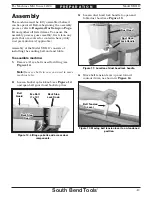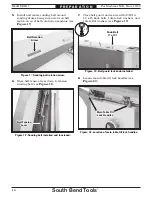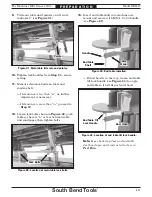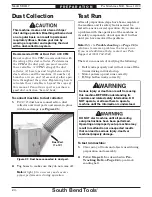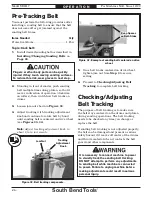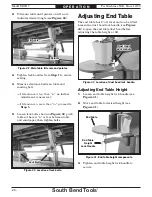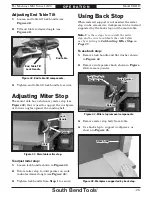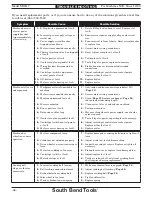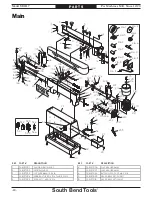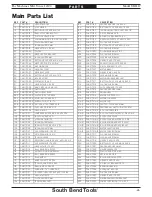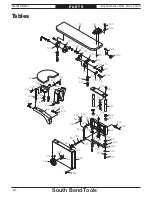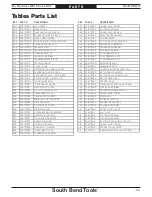
South Bend Tools
For Machines Mfd. Since 12/20
Model SB1117
-31-
O P E R A T I O N
Figure
Figure 49. Typical contour sanding operation.
. Typical contour sanding operation.
Bevel Sanding
Bevel sanding can take place on either the main
table or the end table on the Model SB1117.
Adjust the table tilt to match the angle you wish
to sand on a workpiece. Regardless of the table
being used, always keep the workpiece against
the table and use two hands to control it.
To bevel sand:
1.
Set table tilt to match angle of bevel on
workpiece, and set main table height to
match workpiece thickness.
2.
Connect machine to power, turn it ON, and
allow it to reach full speed.
3.
Support workpiece with table (and miter
gauge or back stop if operation allows), and
slowly feed workpiece into moving belt with
light, even pressure (see Figures 50
–
51. DO
NOT force workpiece against belt.
To contour sand:
1.
Open end table dust hood.
2.
Raise end table to desired height and
adjust table tilt to desired setting (refer to
Adjusting End Table on Page 28).
3.
Connect machine to power, turn it ON, and
allow it to reach full speed.
4.
While securely holding workpiece, slowly
feed workpiece into moving belt with
light, even pressure. Maintain control of
workpiece, as shown in Figure 49. DO NOT
force workpiece against belt.
Contour Sanding
Contour sanding operations are performed on the
end table with the workpiece pressing against
the idler wheel sanding drum. Always use two
hands to maintain best control.
Do not contour sand without end table
properly installed or serious personal injury
could result.
Figure
Figure 50. Bevel sanding operation example.
. Bevel sanding operation example.
Figure
Figure 51. Bevel contour sanding operation example.
. Bevel contour sanding operation example.

